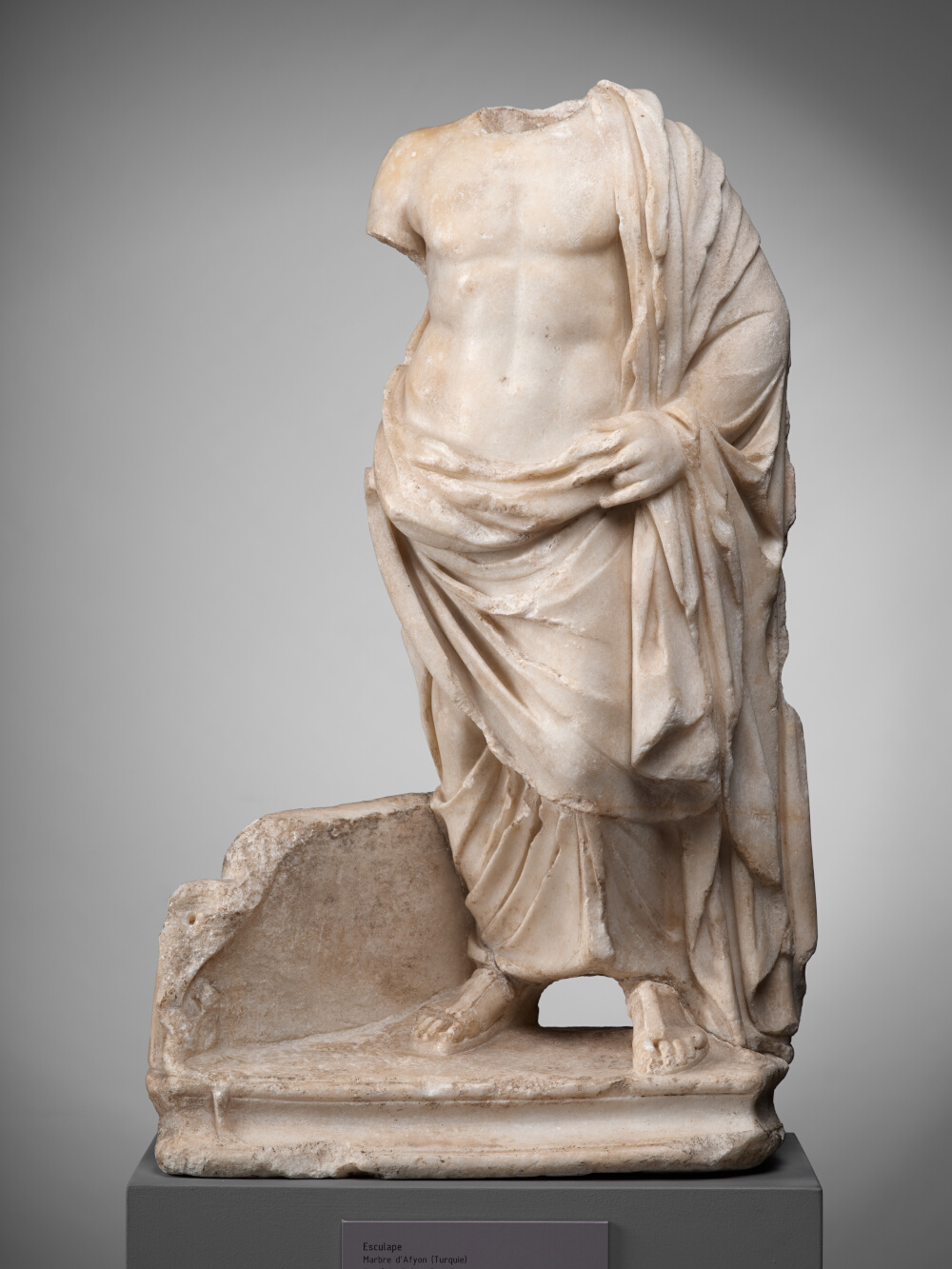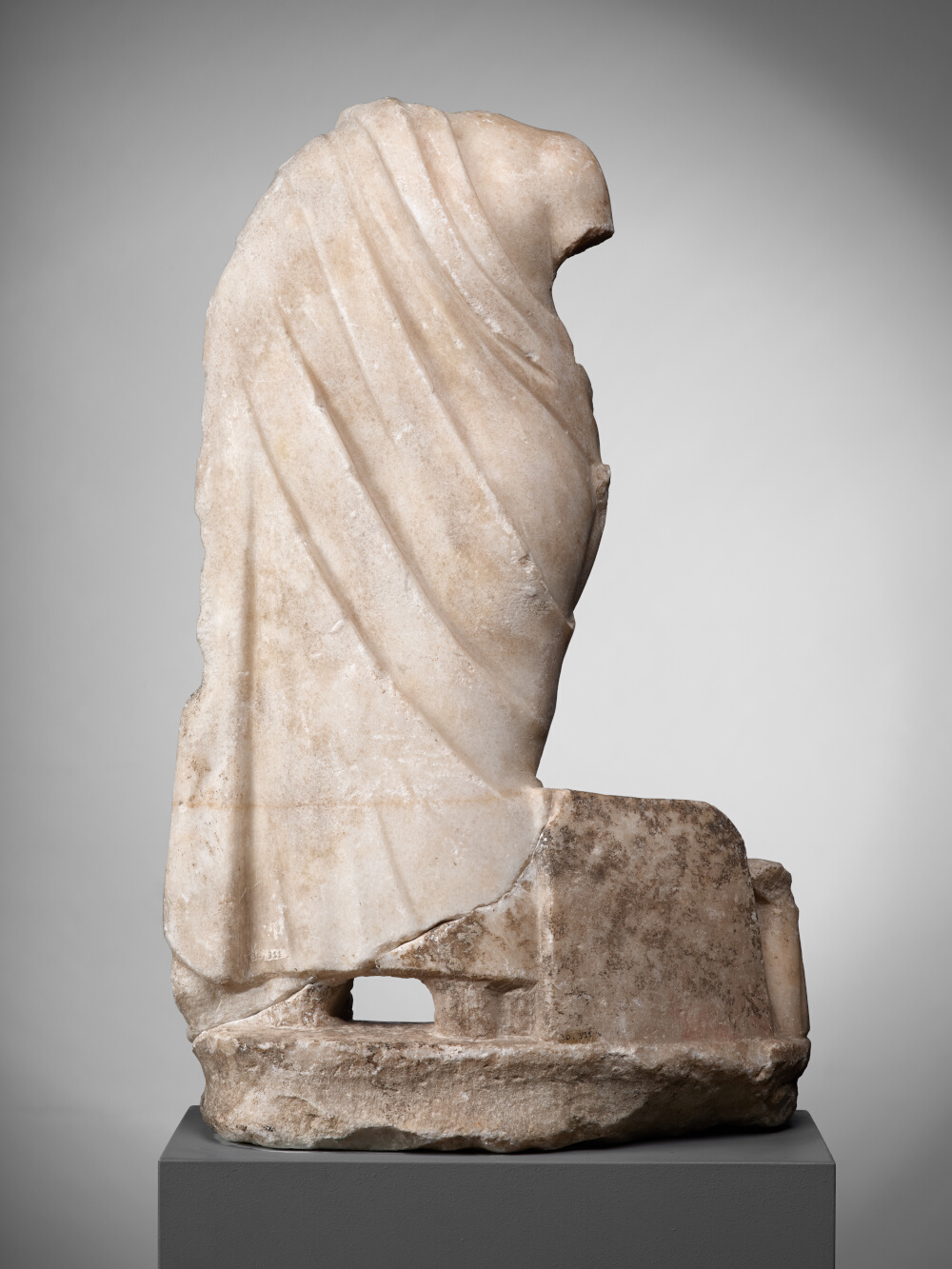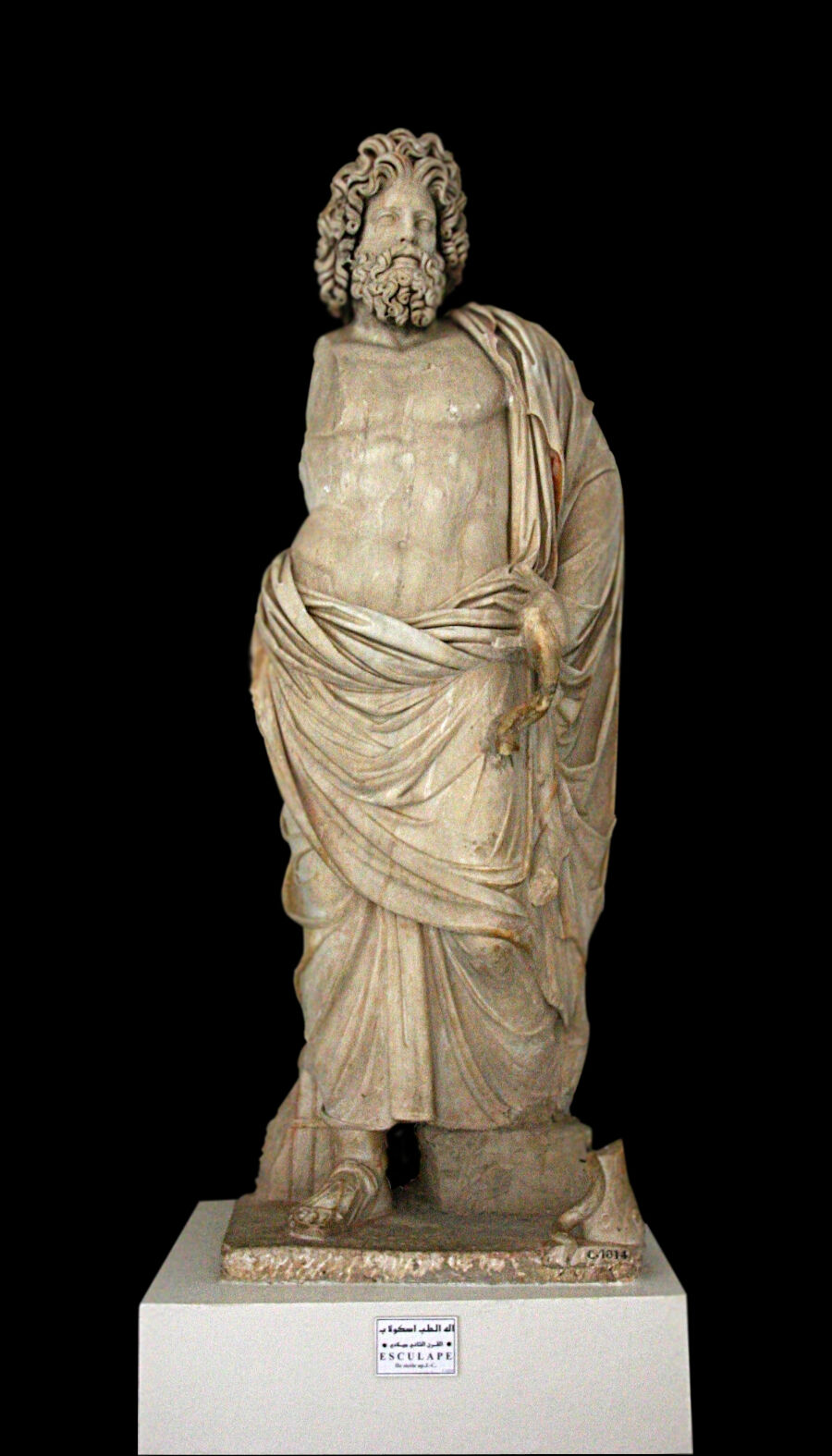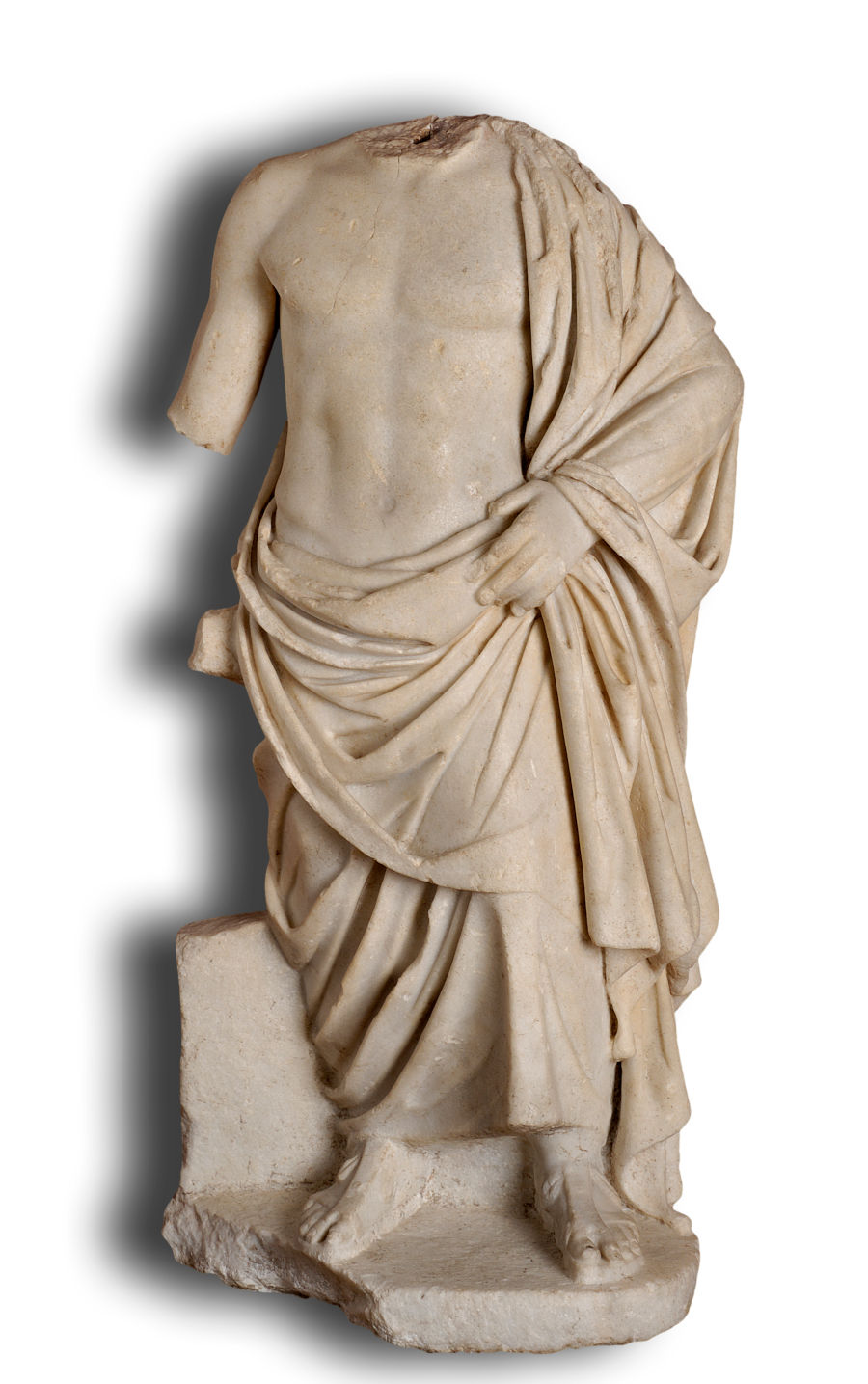Asclepius


- Date de création
- 2nd century
- Material
- Afyon marble (Turkey)
- Dimensions
- H. 69 x l. 43 x P. 19,5 (cm)
- Inventory number
- Ra 41
- Photo credits
- Daniel Martin
Asclepius (Asklēpiós in Greek), god of medicine, was entrusted at a very young age by his father, Apollo, to the centaur Chiron who taught him the art of healing. This discipline is symbolised, among other things, by the serpent, whose tail can still be seen on the left-hand side of the plinth, which would have been wrapped around the gnarled stick held by the god of Epidaurus.
Initially seen as a  variant of a Greek original from the 5th century BC, this work is now listed as a pastiche. Assuming that this type was created during the imperial period, it still retains the essence of classical Greek art E.M. Koppel, E.M. Koppel, « Petite statue du dieu guérisseur Esculape, » D. Cazes, Museu nacional arqueologic, Musée Saint-Raymond (eds.), Tarraco, capitale de l’Hispania citerior. Exhibition, Toulouse, Musée Saint-Raymond, 27 July - 26 November 2005, Toulouse-Tarragona, 2006, p. 176.. The prototype proved a great success, as evidenced by
variant of a Greek original from the 5th century BC, this work is now listed as a pastiche. Assuming that this type was created during the imperial period, it still retains the essence of classical Greek art E.M. Koppel, E.M. Koppel, « Petite statue du dieu guérisseur Esculape, » D. Cazes, Museu nacional arqueologic, Musée Saint-Raymond (eds.), Tarraco, capitale de l’Hispania citerior. Exhibition, Toulouse, Musée Saint-Raymond, 27 July - 26 November 2005, Toulouse-Tarragona, 2006, p. 176.. The prototype proved a great success, as evidenced by  another replica of the same size discovered in the cold room (frigidarium) of the lower baths of the villa d’Els Munts in Altafulla (Catalonia) E.M. Koppel, « La decoración escultórica de las villae romanas en Hispania, » Poblamiento rural romano en el sureste de Hispania : actas de la Jornadas celebradas en Jumilla del 8 al 11 de noviembre de 1993, 1995, pp. 27–48, p. 42.. Could this medium sized statue discovered in Chiragan at the beginning of the excavations by Alexandre Du Mège in 1826, also come from one of the villa’s two bathing complexes? The deep connection between water and the healing god does not contradict this theory.
another replica of the same size discovered in the cold room (frigidarium) of the lower baths of the villa d’Els Munts in Altafulla (Catalonia) E.M. Koppel, « La decoración escultórica de las villae romanas en Hispania, » Poblamiento rural romano en el sureste de Hispania : actas de la Jornadas celebradas en Jumilla del 8 al 11 de noviembre de 1993, 1995, pp. 27–48, p. 42.. Could this medium sized statue discovered in Chiragan at the beginning of the excavations by Alexandre Du Mège in 1826, also come from one of the villa’s two bathing complexes? The deep connection between water and the healing god does not contradict this theory.
P. Capus
Bibliography
- Landes 1992 C. Landes (ed.), Dieux guérisseurs en Gaule romaine. Exhibition, Musée archéologique Henri Prades, Lattes, 1992, Lattes. no 10
- Cazes et al. 1999 D. Cazes, E. Ugaglia, V. Geneviève, L. Mouysset, J.-C. Arramond, Q. Cazes, Le Musée Saint-Raymond : musée des Antiques de Toulouse, Toulouse-Paris. p. 110-111
- Du Mège 1835 A. Du Mège, Description du musée des Antiques de Toulouse, Toulouse. no 116
- Du Mège 1828 A. Du Mège, Notice des monumens antiques et des objets de sculpture moderne conservés dans le musée de Toulouse, Toulouse. no 53
- Espérandieu 1908 É. Espérandieu, Recueil général des bas-reliefs de la Gaule romaine, 2. Aquitaine, Paris. no 912
- Joulin 1901 L. Joulin, Les établissements gallo-romains de la plaine de Martres-Tolosane, Paris. no 144
- Rachou 1912 H. Rachou, Catalogue des collections de sculpture et d’épigraphie du musée de Toulouse, Toulouse. no 41
- Roschach 1865 E. Roschach, Catalogue des antiquités et des objets d’art, Toulouse. no 41
- Thiollier-Alexandrowicz, Bedon, Chevallier 1996 G. Thiollier-Alexandrowicz, R. Bedon, R. Chevallier, Itinéraires romains en France : d’après la "Table de Peutinger" et l’ "Itinéraire d’Antonin", Dijon. p. 175
To cite this notice
Capus P., "Asclepius", in The sculptures of the roman villa of Chiragan, Toulouse, 2019, online <https://villachiragan.saintraymond.toulouse.fr/en/ark:/87276/a_ra_41>.